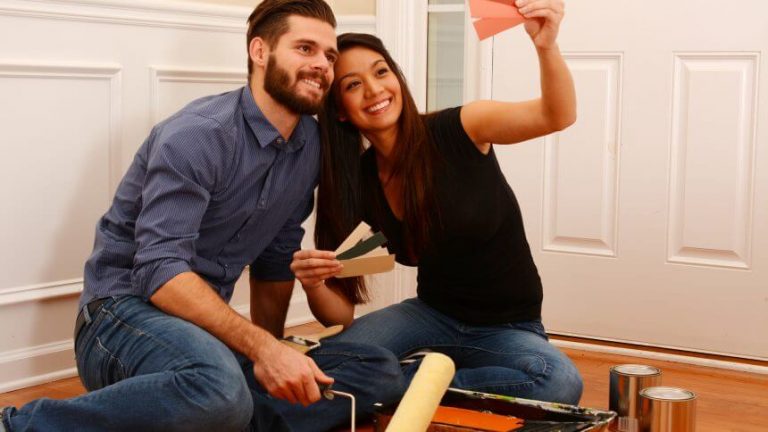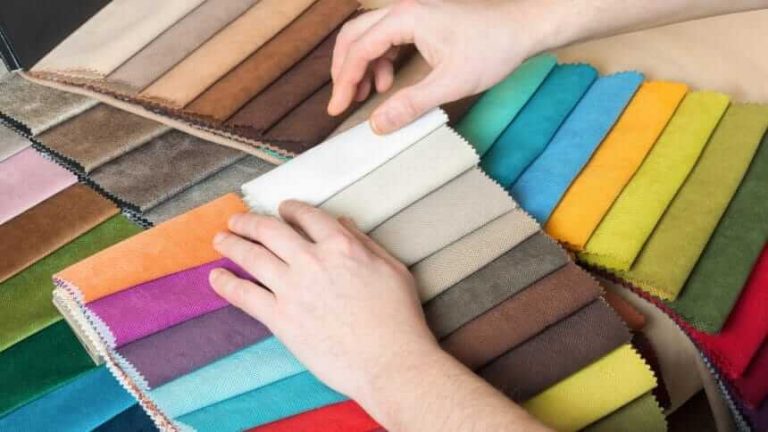10 Best Paint Colors For Your Kids’ Room
When it comes to selecting paint colors for your kids’ room, you can go with neutral walls and then add colorful accents. You can save the bright colors for their toys if you wish.
Painting a room is a low-cost upgrade that can refresh your child’s bedroom once they are too old for the baby pink or blue they started with all those years ago.
Alternately, you can swap out those neutral walls for bold colors. Either way, you can choose colors that will grow with your child. Better yet, include your son or daughter in the design process if he or she is old enough.
This article contains some fun kids room paint ideas as well as the most popular kids room colors.
Make It a Group Project
Experts say that the person who designs the room is the one who’s going to occupy it. Before you head off to the pain aisle, involve your child in picking out the theme and color scheme.
Ask your child which walls they’d like to paint which color. If you’re on a budget, you can set up constraints, such as muted colors only as opposed to bold colors.
Or, perhaps the design project is going in phases, and it’s paint-only for now. They can think about rugs and wall decals down the line.
If your children share a room, their choices should be complementary colors. Though, they can decide which wall will receive which color. If you wish to limit them to a single neutral color, they can choose their own d?cor and accent pieces.
If your kids are old enough, hand them a brush and paint together! Allowing them to be part of the project will give them a sense of ownership.
If they aren’t that great at painting (who is?), have them paint less conspicuous areas like the inside of a bookcase or closet.
Get Creative
The practical side of painting a kid’s room is to choose an interior paint with a semi-gloss finish that will stand up to wear and messes. Essentially, go with kid-proof paint. Beyond that, however, the sky’s the limit.
Customize your child’s room any number of ways, from adding chalkboard paint, or glow-in-the-dark, glitter, magnetic, and even confetti paints to accent away.
Kids can post notes and artwork on an area painted with chalkboard or magnetic paint. Now that you mention is, chalkboard paint goes great just about anywhere. You can add some to a desk to create a built-in doodle pad.
You can use glow-in-the-dark paints and stencils to create a starry night across the ceiling. Any girl bedroom color will pop with some glitter or confetti paint.
Paint the Furniture
If you prefer to stick with neutral colors for the walls and trim, you can add color to the furniture. Unless your child’s bedroom set was a gift or family heirloom, have some fun painting dressers, chairs, and bookcases.
A quick coat of primer and you’re ready to create artful, customized furniture for your child’s room. Go with high-gloss paints for a polished patina look that holds up against your kids.
If you’ve got a rough bunch, try distressed treatments to create weathered patinas that look better as your kids ping, ding, and dent them.
Chalk paint is a popular choice because you can repaint old furniture without having to first sand, strip, and prime it. Just paint and finish with a sealer to protect it.
If you have unfinished furniture, you can opt for colorful, water-based wood stains. The result is a distinctive look. And who says all the legs on that chair and bed frame need to be the same color? Mix it up as you please.
Add the Accents
Add patterns to your child’s room. You can paint the walls with stripes, for instance. Stripes are versatile and work well for both a boy and girl bedroom color.
You can also use geometric patterns on the walls to add an element of fun to your color scheme.
Geometric Shapes
Adding geometric shapes also means you can add more colors to the walls. If you have siblings sharing a room, that’s an excellent way to get all their favorite colors worked into the mix.
To accomplish this, block out your shapes with painter’s tape. You may want your design to cover an entire wall. Or, you may just want to create an accent stripe of some sort.
Repeating triangle designs work well for this. As do large triangle “mountains” or cubes.
Murals
You can add some whimsy by painting a wall-sized mural if you’re feeling ambitious. If that’s not on your list of singular talents, you can order large wall appliques online that serve the same purpose.
Using stencils is another fun option for adding princess tiaras, bugs, spaceships, or anything else your child likes.
Remember to keep the kids involved. They can use paint to place handprints or write their names on the walls. They will love the opportunity to literally leave their mark on their own room.
Kids Room Colors
Painting is no small project. You have to move your child’s furniture, tape off the molding, and drape the floors and furniture. THEN you can start to paint.
Before you begin this major project, be sure to choose colors that they won’t outgrow in a year. The following colors will last for years as your kids grow and move through their growing up stages.
1. Cerulean Blue
Baby blue is how many rooms start. Once your baby is no longer a baby, it’s time to move on to more vibrant shades. Cerulean blue is a rich shade of blue that will look right no matter how old your baby boy is.
2. Yellow
Many interior designers will tell you that a bright and cheerful room affects a person’s mood for the better. Bright yellow will create a welcoming place where kids are comfortable playing and doing their homework.
If you don’t want too much sunshine, try a pale yellow to add gentle lightness into a space.
3. Eggshell
Pure white can make a room look bleached out. You can warm up the room with an eggshell shade. Eggshell is a neutral color, so you can add contrast using accent pieces and other decor.
4. Chalkboard
As we mentioned before, chalkboard paint is a fun option with a variety of color selections.
Whether you paint an entire wall or just a strip by the bathroom door, your kids and their friends have a great time writing on the walls WITH permission!
5. Aqua
Aqua is a shade of blue that is extremely versatile because it complements just about anything, from coral, to green, to pink, to yellow.
6. Beige
A classic sand color is neutral and will remain in favor for years. It also acts as a base for a changing room decor. As your child matures, his or her tastes are subject to change.
As they do, you can easily swap out the old theme for a new one without having to repaint. Your child can express his or her personal style as it evolves.
7. Pale Green
This shade of green is bright enough to make a room feel bigger. It pulls in the natural light. It’s an excellent option for both a boy’s or a girl’s room.
8. Sea Blue
OK, think pirate ships and mermaids here. Sea blue complements many fairy tale themes. It’s also a pleasing color on its own.
9. Lilac
While purple, or “crayon purple” is often associated with young children, lilac is a more mature shade of purple. It’s sweet and bright enough for a younger child’s room.
But, it remains a good color choice as your child moves into middle school and high school.
10. Sky Blue or Light Pink
Sky blue is as pleasant a shade as it sounds. This shade of blue sends relaxing feelings into a room. Likewise, light pink is the classic shade of pink that stays with most girls through their teen years.
Let’s Paint
Painting is more than a one-day job, though the result is pleasing and with minimal dents in the bank account. After you choose your kids room colors, set aside some time to finish the project.
Sometimes, it’s worth the peace of mind to hire professional painters. If you’d like more information about interior room painting, please contact us.







